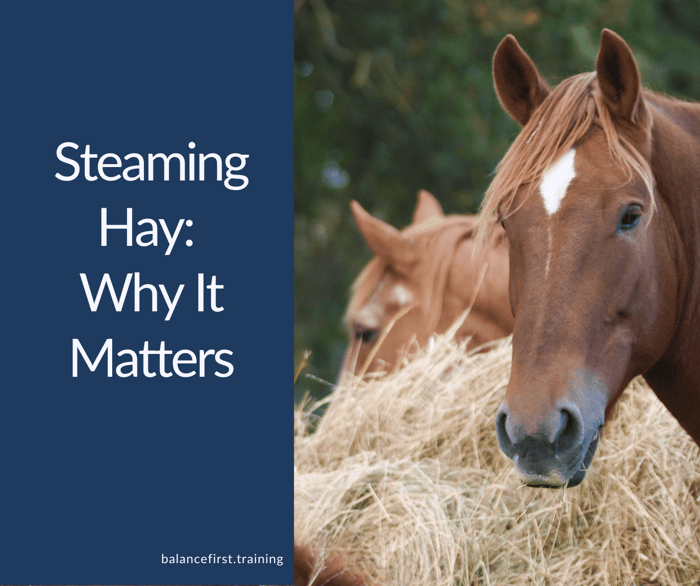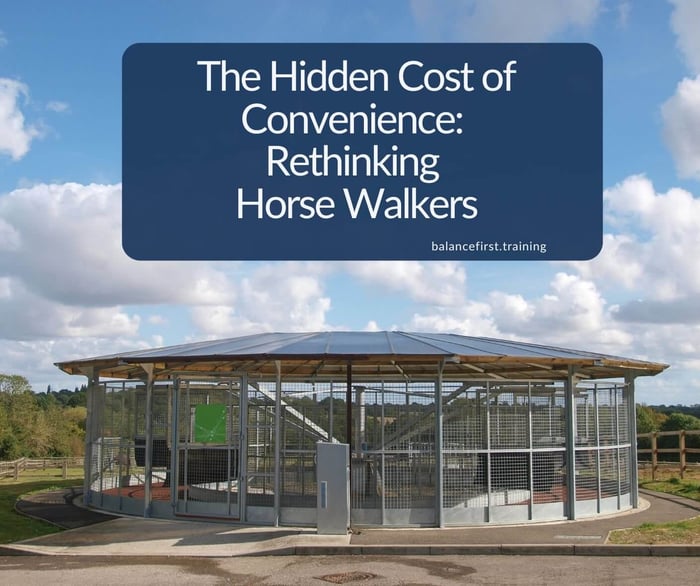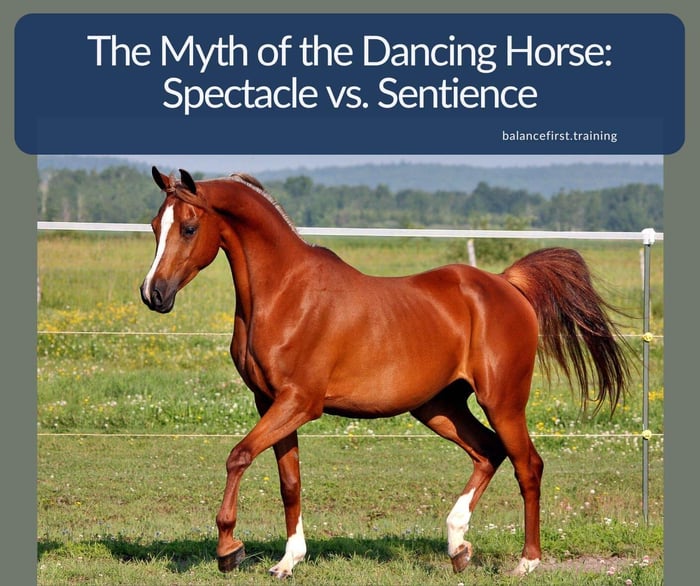Table of Contents
- 1. Daily Turnout: Movement is Medicine
- 2. Companionship: Herd Animals Need Herds
- 3. Nutrition: Grazing, Forage, and Freedom
- 4. Environment: Safe, Stimulating, and Sound
- 5. Mental Stimulation: Beyond the Basics
- 6. Emotional Safety: The Invisible Need
- Final Thoughts: The Bare Minimum is Only a Starting Point
- FAQs
Meeting the Horse’s Basic Needs: A Holistic Minimum Standard. In a world where convenience often overshadows compassion, it’s easy to forget that horses are sentient beings with complex physical, emotional, and social needs.
Meeting those needs isn’t a luxury, it’s the bare minimum.
True horsemanship begins with working with the horse’s nature, not against it. That means creating an environment where horses can thrive, not just survive.
So what does that look like in practice?
1. Daily Turnout: Movement is Medicine
In the wild, horses travel around 10 - 20 miles (16 - 32 kilometres) a day, sometimes more, as they search for food, water, and safety. This constant, low-intensity movement supports digestion, circulation, hoof health, and emotional balance.
 In the wild, horses travel 10 - 20 miles a day.
In the wild, horses travel 10 - 20 miles a day.
Domestic horses, by contrast, often live in confined spaces, making regular turnout and movement essential to mimic their natural rhythm and prevent physical and mental stagnation.
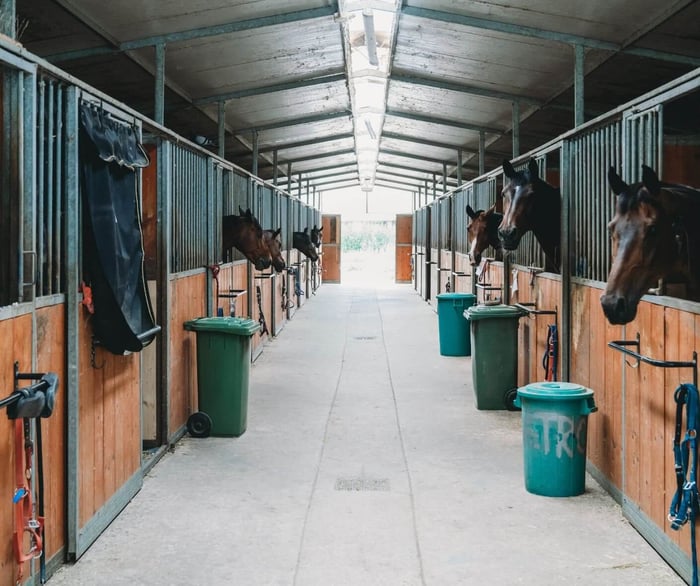 Horses need to have free access to shelter but avoid keeping them shut in for too long. For horses that are stabled 24/7 it must be similar to living in a toilet which is only just big enough to lie down, and having your meals passed through a hatch.
Horses need to have free access to shelter but avoid keeping them shut in for too long. For horses that are stabled 24/7 it must be similar to living in a toilet which is only just big enough to lie down, and having your meals passed through a hatch. Horses are designed to move. Their bodies, minds, and emotions depend on it. At a bare minimum, horses should be turned out for at least four hours daily, though more is always better. Turnout allows for:
- Joint health and circulation
- Mental relaxation and emotional regulation
- Natural social behaviours and exploration
Even short periods of turnout can reduce stiffness, prevent filled legs, and support digestion. But the quality of turnout matters too. A small, muddy paddock isn’t enough.
Horses need space to walk, graze, and interact. Track systems or paddock paradise setups can enhance movement, reduce pasture damage, and encourage natural foraging behaviour.
 Varied terrain and companionship.
Varied terrain and companionship.
2. Companionship: Herd Animals Need Herds
Horses are deeply social creatures. Isolation is not just unkind, it’s unnatural. Whether it’s a bonded pair or a small group, companionship is vital for:
- Emotional stability and reduced anxiety
- Healthy social learning and play
- Protection from boredom and depression
Even visual and tactile contact through safe fencing can make a difference for horses who can’t share space directly. A solitary horse is a vulnerable horse, mentally, emotionally, and physically.
3. Nutrition: Grazing, Forage, and Freedom
Forage refers to the fibrous plant material horses are designed to eat, such as grass, hay, and haylage. It forms the foundation of a horse’s diet, supporting digestion, energy levels, and emotional balance. Horses should consume at least 1–2% of their body weight in forage daily, ideally spread throughout the day to mimic natural grazing patterns. Forage isn’t just food, it’s a biological and behavioural necessity.
A horse’s digestive system is built for constant, low-level intake. That means:
- Ad-lib good-quality forage, or
- Forage is offered at least four times daily to mimic natural grazing rhythms
- Good quality forage, not just quantity, but nutritional integrity
- Constant access to clean, fresh drinking water and salt/mineral licks
Feeding routines should support gut health, prevent ulcers, and avoid the feast-or-famine cycle that can lead to behavioural and metabolic issues. Horses should never be left without forage for extended periods.
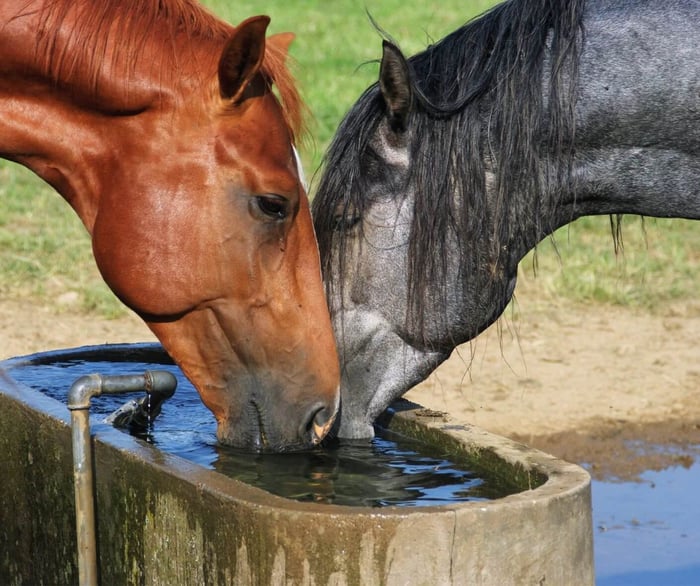 On average, a healthy adult horse will drink between 20 to 50 litres (5 to 13 gallons) of water per day.
On average, a healthy adult horse will drink between 20 to 50 litres (5 to 13 gallons) of water per day.4. Environment: Safe, Stimulating, and Sound
The physical space a horse lives in shapes every aspect of their wellbeing. Horses thrive in environments that offer:
- Well-drained fields to prevent hoof issues and mud fever
- Shelter from wind, rain, and sun
- Varied terrain to support proprioception and hoof conditioning
- Track systems that encourage movement and reduce pasture damage
A thoughtfully designed environment supports both physical and emotional well-being. It’s not just about avoiding harm, it’s about promoting health.
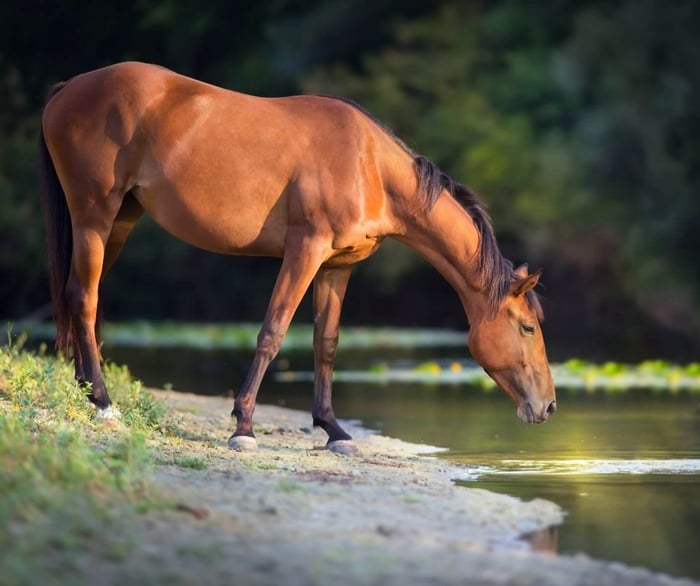 Environmental features like a fresh water stream will enrich your horse's environment.
Environmental features like a fresh water stream will enrich your horse's environment.5. Mental Stimulation: Beyond the Basics
Horses need more than food and shelter. They need mental engagement. That can come from:
- Liberty work and groundwork
- Exploration and novelty in their environment
- Gentle, respectful training that encourages curiosity
A horse that is mentally stimulated is more relaxed, more connected, and more resilient. Boredom leads to frustration, which often manifests as behavioural issues that may be misunderstood or punished.
6. Emotional Safety: The Invisible Need
Perhaps the most overlooked need is emotional safety. Horses are prey animals. They thrive in environments where they feel safe, understood, and respected. That means:
- Consistent routines and gentle handling
- Freedom from fear-based training methods
- Opportunities to express themselves without punishment
Emotional safety is the foundation of trust. Without it, no amount of turnout or hay will make a horse truly well.
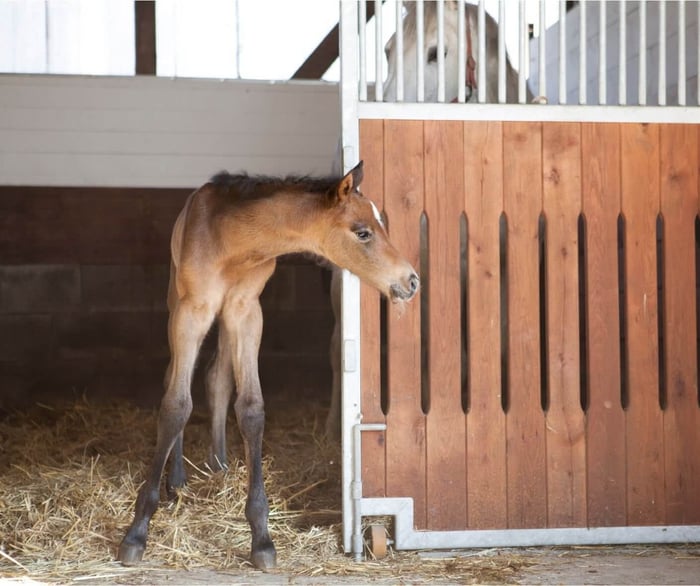 Horses are curious and inquisitive, and love to explore their environment.
Horses are curious and inquisitive, and love to explore their environment.Final Thoughts: The Bare Minimum is Only a Starting Point
Meeting these basic needs isn’t the end goal, it’s the foundation. When we provide horses with freedom, companionship, movement, nourishment, and emotional safety, we create the conditions for trust, learning, and joy. Anything less is a compromise.
It’s easy to be dazzled by performance, ribbons, and routines. But true horsemanship isn’t about control, it’s about connection. It’s about asking not “What can my horse do for me?” but “What does my horse need from me?”
If you’re just starting to rethink your setup, begin with one change. Add an extra hay feeding. Extend turnout by an hour. Invite a companion into your horse’s world. Small shifts lead to big transformations.
At Balance First, we believe that every horse deserves more than management. They deserve care. They deserve consideration. They deserve a life that honours their nature.  A smart, tidy barn doesn't necessarily mean happy horses live there.
A smart, tidy barn doesn't necessarily mean happy horses live there.
FAQs
What are the basic daily needs of a horse?
At minimum, horses need daily turnout (at least 4 hours), companionship with other horses, regular access to good-quality forage, clean water, and a safe, well-drained environment. These needs support their physical, emotional, and social well-being.
Why is daily turnout important for horses?
Turnout allows horses to move freely, socialise, and engage in natural behaviours. It supports joint health, digestion, mental relaxation, and prevents behavioural issues caused by confinement.
Can horses live alone?
While some horses tolerate solitude, it’s not ideal. Horses are herd animals and thrive with companionship. Isolation can lead to stress, depression, and behavioural problems. Even visual or tactile contact with other horses is better than none.
How often should horses be fed forage?
Ideally, horses should have ad-lib access to forage. If that’s not possible, forage (for example, hay, haylage, or good-quality straw) should be offered at least four times a day to mimic natural grazing patterns and prevent digestive issues.
Why shouldn’t horses be left without forage?
Horses continuously produce stomach acid. Without forage to buffer it, the acid can irritate the stomach lining, leading to ulcers and discomfort. An empty stomach is a serious welfare risk.
Is lush grass dangerous for horses?
Yes, especially for native breeds or horses prone to metabolic issues. Rich grass contains high levels of sugar (NSCs), which can trigger laminitis. Controlled grazing, track systems, or grazing muzzles can help manage intake safely.
What makes a horse’s environment “healthy”?
A healthy environment includes well-drained fields, shelter from weather, varied terrain for movement, and safe fencing. Track systems can encourage movement and reduce pasture damage while supporting hoof health.
How can I tell if my horse is emotionally well?
Signs of emotional well-being include relaxed posture, soft eyes, curiosity, and willingness to engage. Horses that are shut down, reactive, or withdrawn may be experiencing emotional distress, even if their basic physical needs appear met.
What’s the difference between managing and truly caring for a horse?
Management focuses on routine and control. True care considers the horse’s physical, emotional, and mental needs. It’s about creating a life that honours the horse’s nature, not just maintaining convenience or tradition.

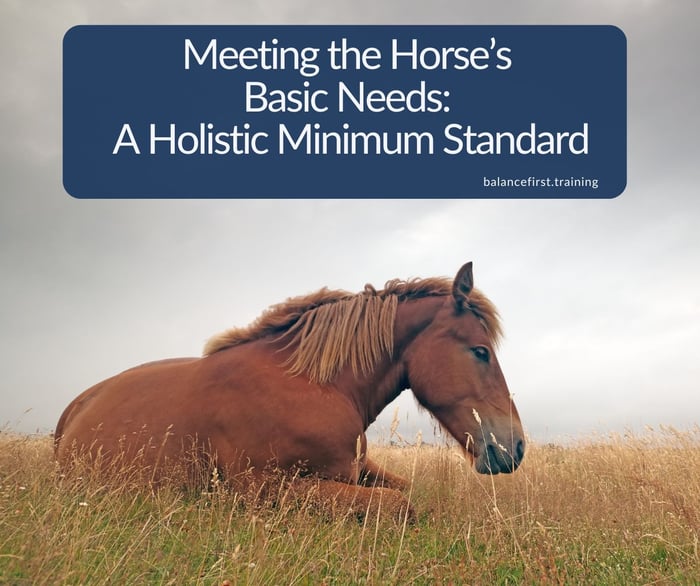
.JPG)
